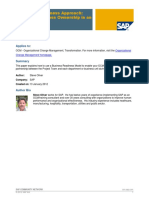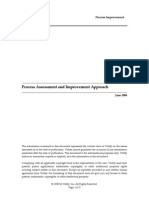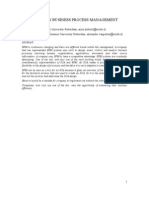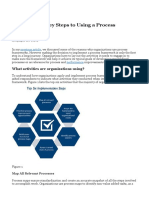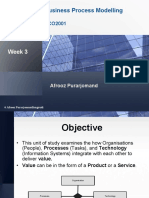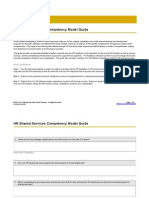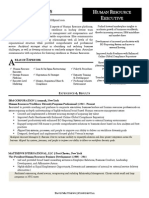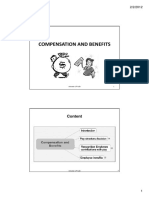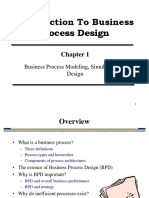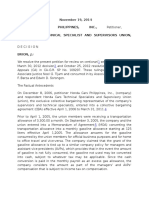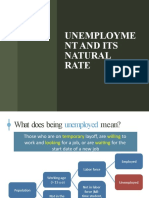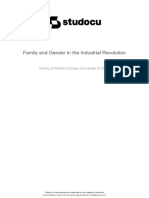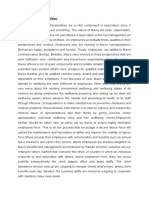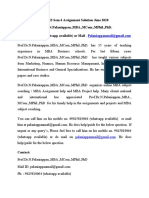100% found this document useful (1 vote)
293 views29 pagesBusiness Process Analysis Guide
The document provides an overview of business process analysis (BPA). It defines a business process as a set of interrelated tasks that achieve a goal. BPA involves gathering information to describe the current ("as is") process, define an improved ("should be") process, and model a future ("can be") process. The twelve step BPA method involves naming the process, defining terms, identifying stakeholders, describing tasks and decisions, and establishing measures to identify areas for improvement and plan process changes. BPA aims to streamline processes by eliminating unnecessary steps and integrating tasks.
Uploaded by
drizzydamnCopyright
© © All Rights Reserved
We take content rights seriously. If you suspect this is your content, claim it here.
Available Formats
Download as PPT, PDF, TXT or read online on Scribd
100% found this document useful (1 vote)
293 views29 pagesBusiness Process Analysis Guide
The document provides an overview of business process analysis (BPA). It defines a business process as a set of interrelated tasks that achieve a goal. BPA involves gathering information to describe the current ("as is") process, define an improved ("should be") process, and model a future ("can be") process. The twelve step BPA method involves naming the process, defining terms, identifying stakeholders, describing tasks and decisions, and establishing measures to identify areas for improvement and plan process changes. BPA aims to streamline processes by eliminating unnecessary steps and integrating tasks.
Uploaded by
drizzydamnCopyright
© © All Rights Reserved
We take content rights seriously. If you suspect this is your content, claim it here.
Available Formats
Download as PPT, PDF, TXT or read online on Scribd
/ 29











